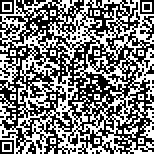| 引用本文: | 舒玲,霍本念,吴秋莹,陈秋红,宋林,贾运涛.儿童患者使用利奈唑胺致高乳酸血症的风险因素分析[J].中国现代应用药学,2023,40(22):3169-3176. |
| SHU Ling,HUO Bennian,WU Qiuying,CHEN Qiuhong,SONG Lin,JIA Yuntao.Risk Factors Analysis of Linezolid-induced Hyperlactatemia in Pediatric Patients[J].Chin J Mod Appl Pharm(中国现代应用药学),2023,40(22):3169-3176. |
|
| |
|
|
| 本文已被:浏览 1980次 下载 714次 |

码上扫一扫! |
|
|
| 儿童患者使用利奈唑胺致高乳酸血症的风险因素分析 |
|
舒玲, 霍本念, 吴秋莹, 陈秋红, 宋林, 贾运涛
|
|
重庆医科大学附属儿童医院药学部, 国家儿童健康与疾病临床医学研究中心, 儿童发育疾病研究教育部重点实验室, 重庆医科大学附属儿童医院大数据工程中心, 重庆 400014
|
|
| 摘要: |
| 目的 研究在儿童患者中使用利奈唑胺(linezolid,LZD)致高乳酸血症的风险因素。方法 搜集2012年10月—2023年2月在重庆医科大学附属儿童医院接受LZD治疗的儿童住院患者信息并进行回顾性分析,采用单因素及多因素logistic回归分析其风险因素,通过限制性立方样条模型进一步分析各风险因素与LZD致高乳酸血症之间的剂量-反应关系。结果 共纳入331例儿童患者,其中145例患儿(43.8%)发生高乳酸血症,患儿年龄中位数为3(0.92,9)岁,LZD治疗天数中位数为13(8,22)d。患儿接受LZD治疗天数较长(OR=1.026,P=0.004),合用P-糖蛋白诱导剂(OR=2.023,P=0.004)、乳酸基线值较高(OR=2.408,P=0.022)和低肾小球滤过率(OR=0.997,P=0.047)为LZD致高乳酸血症的独立危险因素;随着LZD治疗天数增加,LZD致高乳酸血症的风险呈非线性增加(P-non-linear=0.041);乳酸基线值<0.92 mmol·L-1时,LZD致高乳酸血症风险随乳酸基线值升高而持续增加,乳酸基线值>0.92 mmol·L-1时,随着乳酸基线值的升高,LZD致高乳酸血症风险缓慢增加(P-non-linear=0.013)。结论 患儿接受LZD治疗时应关注乳酸基线水平、LZD使用时间、合用P-糖蛋白诱导剂和肾功能不全等风险因素,结合患儿的治疗需求防范高乳酸血症的发生。 |
| 关键词: 利奈唑胺 儿童 高乳酸血症 风险因素 |
| DOI:10.13748/j.cnki.issn1007-7693.20232361 |
| 分类号: |
| 基金项目:重庆市科卫联合医学科研项目中青年高端人才项目(2023GDRC014) |
|
| Risk Factors Analysis of Linezolid-induced Hyperlactatemia in Pediatric Patients |
|
SHU Ling, HUO Bennian, WU Qiuying, CHEN Qiuhong, SONG Lin, JIA Yuntao
|
|
Department of Pharmacy, Children's Hospital of Chongqing Medical University, National Clinical Research Center for Child Health and Disorders, Ministry of Education Key Laboratory of Child Development and Disorders, Chongqing Key Laboratory of Pediatrics, Big Data Engineering Center, Children's Hospital of Chonggqing Medical University, Chongqing 400014, China
|
| Abstract: |
| OBJECTIVE Linezolid(LZD) is a synthetic oxazolidone antibacterial drug that has activity against most Gram positive bacteria. LZD is widely used in pediatric patients, and its common adverse reactions include gastrointestinal reactions and bone marrow suppression, etc. In recent years, LZD-induced hyperlactatemia has gradually attracted attention. LZD-induced hyperlactatemia can exacerbate the condition of pediatric patients and is associated with high mortality rates in children. However, there is currently a lack of data on the risk factors for LZD-induced hyperlactatemia in pediatric patients. METHODS Therefore, this paper collected and retrospectively analyzed the information of hospitalized pediatric patients who received LZD treatment at the Children's Hospital of Chongqing Medical University from October 2012 to February 2023, including demographic characteristics of pediatric patients and clinical treatment related records, etc. According to the inclusion and exclusion criteria, this paper identified whether the included pediatric patients had developed hyperlactatemia and evaluated the causal relationship between LZD and hyperlactatemia using the Naranjo's Scale. The risk factors were analyzed using univariate and multivariate logistic regression, and the dose-response relationship between risk factors and LZD-induced hyperlactatemia was further analyzed using a restricted cubic spline(RCS) model. RESULTS A total of 331 pediatric patients were included, of which 145 pediatric patients(43.8%) developed LZD-induced hyperlactatemia, including 122 cases of mild hyperlactatemia and 23 cases of severe hyperlactatemia; the causal relationship score of LZD-induced hyperlactatemia was “possibly related” in 87 cases(60.0%) and “highly likely related” in 58 cases(40.0%). The median age of pediatric patients was 3(0.92, 9) years old, with 55.29% males, 25.38% patients with liver disease, 8.76% pediatric patients with kidney disease, and 36.56% pediatric patients with cardiovascular disease; the median number of treatment days for pediatric patients receiving LZD was 13(8, 22) d, with pediatric patients with hyperlactatemia having a longer median number of LZD treatment days than those without hyperlactatemia[16(10, 28) vs 11(7, 18)]; 41.09% of pediatric patients used P-glycoprotein inducers in combination, with more pediatric patients(57.4%) experiencing hyperlactatemia; 53.47% of pediatric patients used P-glycoprotein inhibitors in combination; the median values of lactic acid baseline, creatinine baseline, and baseline estimated glomerular filtration rate(eGFR) were 0.92(0.80, 0.92)mmol·L-1, 26(18.25, 34.90) μmol·L-1, 179.97(137.23, 222.70)mL·min-1·(1.73 m)-2, respectively. Multivariate logistic regression analysis showed that pediatric patients received longer LZD treatment duration(OR=1.026, P=0.004), and the combination of P-glycoprotein inducers(OR=2.023, P=0.004), higher lactic acid baseline levels(OR=2.408, P=0.022), and lower eGFR(OR=0.997, P=0.047) were independent risk factors for LZD-induced hyperlactatemia. The RCS model showed that as the number of days of LZD treatment increases, the risk of LZD-induced hyperlactatemia increased nonlinearly(P-non-linear=0.041); when the lactic acid baseline value was -1, the risk of LZD-induced hyperlactatemia dramatically increased as the lactic acid baseline value increased, when it was >0.92 mmol·L-1, the risk of LZD-induced hyperlactatemia slowly increased as the lactic acid baseline value increased(P-non-linear=0.013). CONCLUSION This study explores for the first time the risk factors of LZD-induced hyperlactatemia in pediatric patients, including the impact of the interaction between LZD and drugs that affect mitochondrial function, P-glycoprotein inducers, and P-glycoprotein inhibitors on hyperlactatemia. RCS models are used to analyze the dose-response relationships between LZD treatment days, lactic acid baseline values, and the occurrence of LZD-induced hyperlactatemia. When LZD is combined with P-glycoprotein inducers(mainly isoniazid, rifampicin, and ethambutol), the risk of LZD-induced hyperlactatemia increases, and its related mechanisms still need further research. In addition, pediatric patients with renal insufficiency may need to adjust the LZD dosage appropriately to avoid the occurrence of hyperlactatemia. In conclusion, when pediatric patients receive LZD treatment, attention should be paid to risk factors such as lactic acid baseline value, duration of LZD use, combined use of P-glycoprotein inducers, and renal dysfunction, in order to prevent the occurrence of LZD-induced hyperlactatemia based on the pediatric patient's treatment needs. |
| Key words: linezolid children hyperlactatemia risk factor |
|
|
|
|
